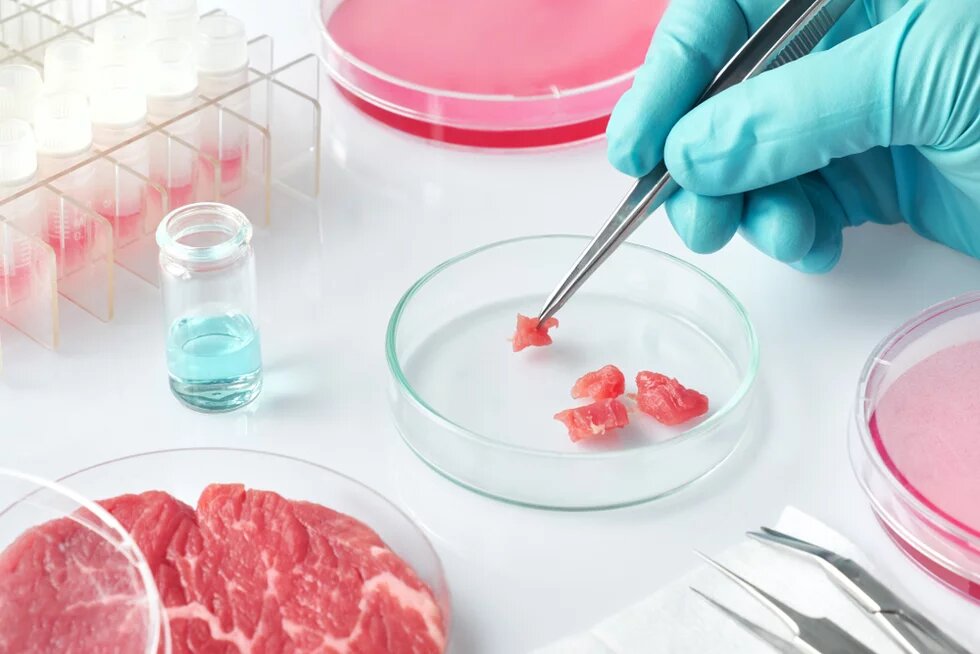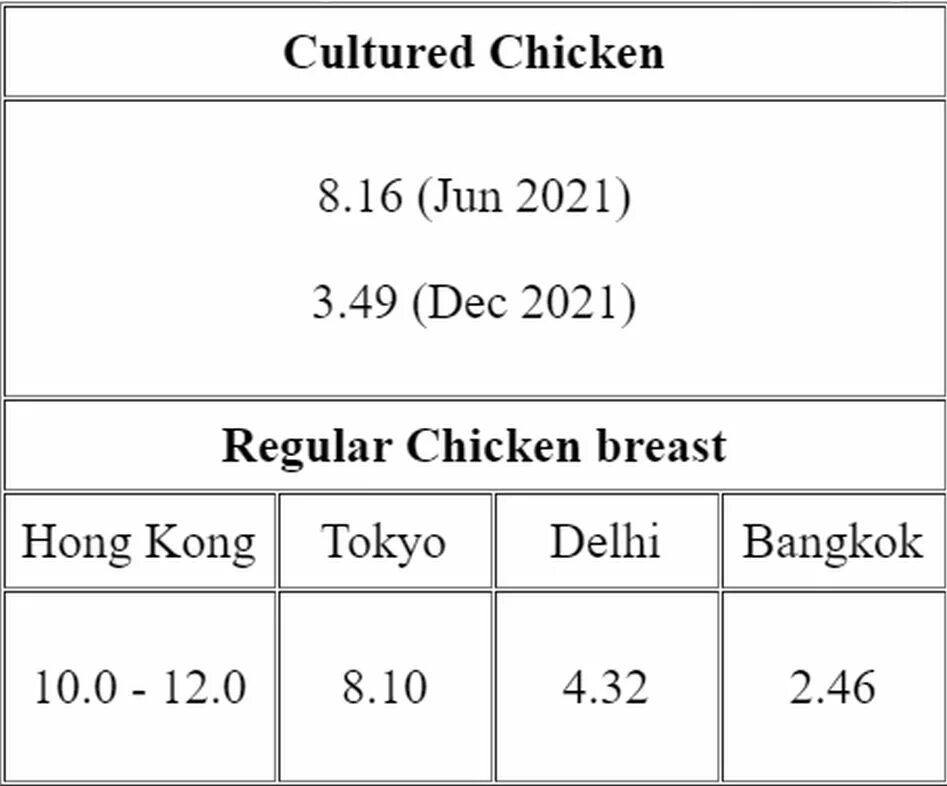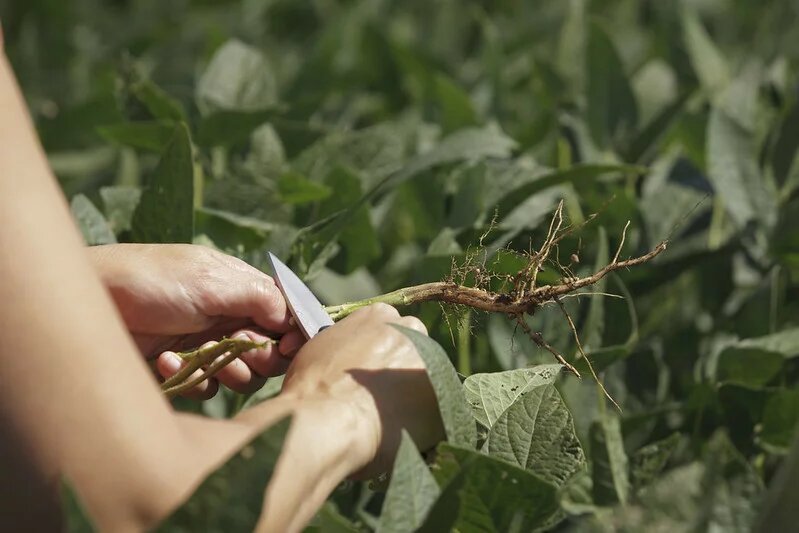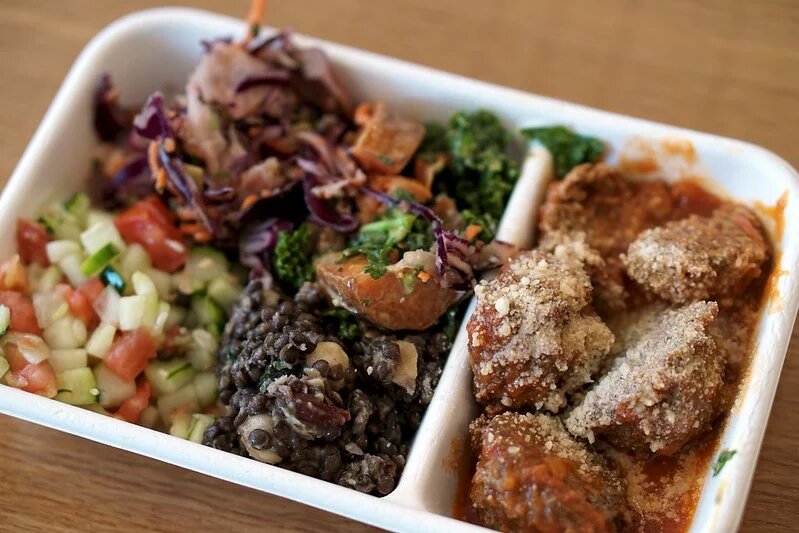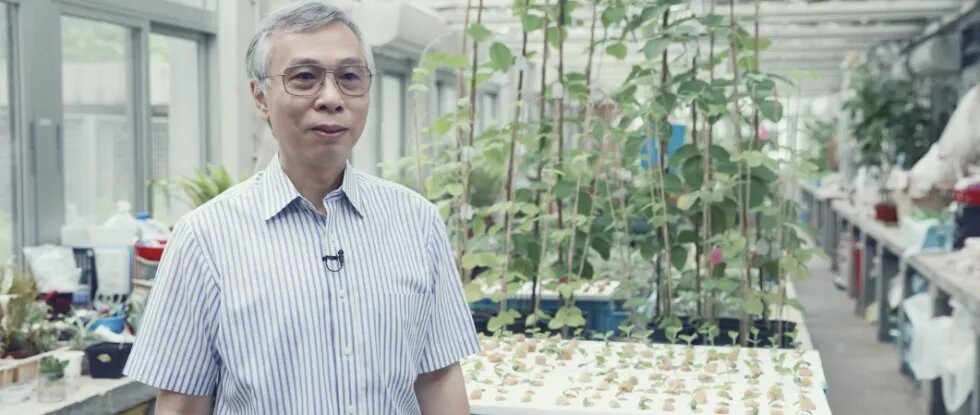
The world is never short of food supply issues. They become headlines on economic and political pages, as when the US food price index surged 3.1-4.2% in 2021, and China urged its people to stock up on food ahead of winter. Scientists have resorted to plant-based meat, cultured meat and genetically engineered plants to mitigate food shortages. The author believes that some emergent food technologies are promising in terms of addressing the problems of feeding the poor, biodiversity, and climate change, yet there are also new challenges to be resolved.

Synthesized foods made of unspeakable raw materials are a feature of dystopian sci-fi movies, unimaginable in real life. Yet 2022 brings us an unwitting reminder of the 1973 classic ecological thriller film Soylent Green. In fact, the real food crisis is more disturbing than the sci-fi version. The annual Global Report on Food Crises (GRFC), in a September 2021 update, stated that the number of people suffering from food crises, emergencies, or famine had reached 161 million in 42 countries.
There are many factors behind the worsening situation, including conflicts and political unrest, extreme weather, economic shocks, crop pests, animal diseases, and Covid-19 triggered economic and logistic problems. While some problems are better tackled through social and political means, scientists have been working for decades on measures to curtail food crises, and are addressing these issues on several fronts. They include genetically modified organisms, genomics-assisted cultivars, plant-based foods and lab-grown foods.
Food tech for good?
Modern technologies are essential in sustainable food production. Even if global population growth has started to decelerate, crops have been growing in increasingly hostile environments, facing rising global temperatures, more frequent floods and cyclones, a lack of fresh water for irrigation, and multiple contaminants. In order to use fewer resources for greater output, future crops are likely to be produced in controllable places such as indoor farms.
Humankind has always tried to breed animals and grow plants to our advantage, dating back to ancient civilizations. The sowing of seeds gathered in the wild and the domestication of livestock were happening well before we had a clear understanding of DNA. In the foods we grow, the most sought-after features are a short time to maturity, high yields, good taste, and resistance to disease.
In cultivated variants (cultivars), plants are grown either from carefully selected seeds, by grafting (joining plant tissues from different breeds), or by genetic modification to retain desirable properties over generations. However, gaining one favourable trait in a certain cultivar might mean losing another favourable trait – for example, a breed that grows faster might not taste better. Human-centric selective breeding also leads to the loss of genetic biodiversity, where certain varieties and features are lost from the gene pool.
The remedial approach is to cross-breed cultivated plants with wild species, and observe if the resulting breed would produce certain traits. This painstaking process can be slow if the growth cycle is long. With the advances in genome sequencing and bioinformatics techniques, scientists can now pinpoint which fragments of the cultivar genome are responsible for a certain trait, thus speeding up the cultivar improvement process.
Soybeans and Rice: Improving Yields
One example is the identification and cloning of salt-tolerant and adversity-tolerant genes from wild soybeans by scientists in Hong Kong and China. Soybean is a staple food not only for humans but also for livestock. Salt-tolerant and drought-resistant crops can grow on lands that were previously non-arable, where farming was impossible. Another significance of soybean is its nitrogen-fixing ability, which is critical in fertilising the land and improving yields of other plants. This is especially important as arable land per capita is dropping in recent decades. In 2018, for two of the most populous countries, arable land per person was 0.086 hectares in China, and 0.116 hectares in India, which is equivalent to 1.7 and 2.3 NBA basketball courts respectively.
Rice is a major staple food in Asia. Scientists are working to manipulate the rice genome and to counter the trend of shrinking arable land. The drought-resistant property is becoming critical, as droughts and extreme weather are putting pressure on some rice-growing countries. Some projects involve breeding rice that is more resistant to drought and salt by splicing the gene of a weed called thale cress to the DNA of rice. In the latest generation of salt-tolerant rice, a gene-editing tool known as CRISPR is used to edit the genes in rice that control salt tolerance, which subsequently allows the rice to grow in saline soil. This would free up precious fresh water resources used for rice irrigation, and potentially expand arable areas to the sea.
Faux meat and lab-grown meat
Another significant trend is the increasing use of plants as a replacement for meat. Vegan or not, humans have many reasons to consume less meat – due to economics, religion, animal welfare, health concerns, environmental sustainability, and biodiversity issues. Using tofu to mimic mutton dates back to the 10th century AD in China. There are existing plant-based replacements for eggs, chicken, pork, fish and beef. On the frontiers of the food industry, hundreds of start-up companies are attempting to find the right concoctions to turn plants into meat replacements. Some have used mung bean proteins to create sauces that would allow one to cook vegan scrambled eggs. Wheat flour, textured soybean protein, sunflower oil, and corn starch can be used to make vegan chicken nuggets.
Many consumers do not like plant-based faux meat due to its taste. (I tried a brand of vegan luncheon meat recently; it didn’t taste like luncheon meat at all!) For those who long for the taste of ‘blood in meat’, some plant-based faux beef patties can be laced with leghemoglobin molecules, or heme, which are trace amounts of oxygen-carrying proteins found in the roots of soy and other leguminous plants. By extracting DNA from the roots of soy and inserting it into genetically engineered (GE) yeast for fermentation, GE heme can be mass produced. Though some consumers and food-safety groups are worried, heme got the nod from the United States Food and Drug Administration by gaining Generally Recognised as Safe (GRAS) status in 2019, and won an appeal from a non-profit food safety group, the Center for Food Safety, in May 2021. This served as an important regulatory milestone towards legalising a wide spectrum of vegan foods that mimic the taste of blood, incorporating them in ingredient lists of caterers and home kitchens.
For those who want ‘real’ meat but have safety concerns about GE food, lab-grown meat (also known as cultured meat) may be a better alternative. Comparable to growing plants in fields, lab-grown meat is developed in vitro as cells on arrays of petri dishes. This approach avoids raising animals on farms and slaughtering them, significantly reducing manure, greenhouse gases, and the use of antibiotics in raising and sanitising livestock. As more diseases are transmitted from animals to humans – bovine spongiform encephalopathy (BSE), swine flu and avian flu being the most striking examples – cultured meat could also curb the spread of zoonotic diseases.
Challenges: Price, texture, animal welfare
Table 1: Cost comparison between cultured chicken and regular chicken breast (USD/kg)
Could lab-grown meat become a feasible and socially acceptable source of food? Price is one important factor. An announcement from Future Meat Technologies in December 2021 stated that the company had managed to reduce the cost of cultured chicken from USD 8.16/kg to USD 3.49/kg within six months. Retail prices would be higher if logistics and retail costs were included. Compared with conventional chicken breast in Asian cities (Table 1), the cost of lab-grown chicken may start to look feasible as compared to retail prices in Hong Kong or Tokyo, but there is still a long way to compete with regular meat in Delhi or Bangkok. To become economically affordable for common people, cultured meat has yet to build a market big enough to lower prices by economy of scale.
Another problem that puts people off from meat alternatives is the lack of taste sensations created by texture, such as tendons and fat. Consumers will notice that most plant-based meat products are in ground and processed forms. To improve sensations, separate “scaffoldings” need to be created. In cultured meat these cells usually come from pluripotent stem cells – “master cells” that are able to differentiate into different types of cells. With biotechnology techniques, induced pluripotent stem cells (iPSCs) are a type of reprogrammable stem cells that can be generated from ordinary somatic cells, to be turned into adipose tissues (fat), blood vessels, and tendons; they could potentially create the scaffold, hence the whole meat texture. On the other hand, a group of Japanese scientists have come up with 3D Wagyu bioprinting to mimic the distribution of cells, fibres, muscle sheets, and tendon-gel, in order to engineer the whole cut meat-like tissue of Japanese Wagyu beef. Laboratory prototypes would be expensive, but costs could be driven down depending on economy of scale.
Besides slaughtering animals for food, moral issues also extend to the choice of growth medium for cultured meat. In addition to a simple mixture of purified water, sugar and salts, the liquid bath of cell-culture medium usually contains growth fetal bovine serum (FBS) or other animal-based serums. There are various projects, for example those in South Korea and the United Kingdom, that aim to develop an FBS-free growth medium in order to deliver cruelty-free, more ethical cultivated meat.
Whether meat alternatives can really help to feed the poor will depend on how successful they are in scaling up consumer uptake and lowering prices, until they become cheaper than conventional meats. Between the two categories of meat alternatives, current plummeting prices of plant-based meat are likely to give it the lead in the market for the near future. In the long term, both vegan meat and cultured meat will have their fair share of supporters.
Areas of likely success in Asia
In Asia, the most likely areas of success for emergent food tech would come from three sectors. The first is fast food chains for the masses, which enjoy rapid growth fuelled by the rising population of millennials, with their hectic lifestyle and higher disposable income. According to Daxue Consulting, in 2019 China consumed around 28% of the global meat supply, which accounted for 73% of the Asia-Pacific meat market value. Given the steep inflation rate, food supply issues and food safety awareness, it will be harder for fast food chain stores to feed their increasing carnivorous customers. It is very unlikely that more customers will convert to vegan diets – the reverse seems to be the case.
Plant-based and lab-growth meat could curb some of the supply issues, and likely in a much safer way, as production could be more sterile and free of hormones and antibiotics in a controlled environment. What’s more, ground and processed meats abound on fast food menus, and fast food customers are more price sensitive. As long as food tastes largely the same, price hikes are kept at bay, and fast food chain stores can dodge public relations crises stemming from contaminated foods, customers will be at peace with these alternatives.
Conversely, the second area of success could be the exotic niche sector of “game meat”, “wild meat” or “bush meat”. The younger generations are more aware that some animals, such as the pangolin (used for Chinese medicine) and eastern lowland gorilla (east of DR Congo), have been eaten towards extinction. Food start-ups like Avant Meat creates cultivated fish maw that is lab-grown and cruelty free. Efforts like this would satisfy consumers whose cultural heritage is to cook and taste exotic foods. They would also prevent the poaching and extinction of rare animals, and get around government bans on eating endangered animals.
The third round of success would most likely come from South Asian countries where rice is a staple food. These countries won’t stop eating rice, which is essential to their cuisine, yet their freshwater supply is drying up. There have been political conflicts among Asian countries over water sources such as the Mekong River. Given the fact that 3400 litres of water is needed for a single kilogram of rice, countries such as India and Bangladesh are planting new rice varieties that are flood resistant. This will also promote food and water independence for these countries, so they have strategic reasons to support projects such as salinity tolerant rice genome mapping.
For other rice-eating countries, there are also incentives to grow varieties that cut methane. There are estimates that growing rice creates about 12% of global manmade methane emissions. Countries like Japan and South Korea, which signed the COP26 agreement to cut methane emissions and have rice as a staple food, have good reason to grow these new rice varieties.
There will always be sceptics that only accept food coming from ‘real’ sources, and reject any factory created food. There will also likely be countries and regions where these foods have difficulty reaching customers. Still, as global food supply issues continue to worsen, it is likely that many of these holdouts will finally succumb to price pressures and the lure of convenience.
